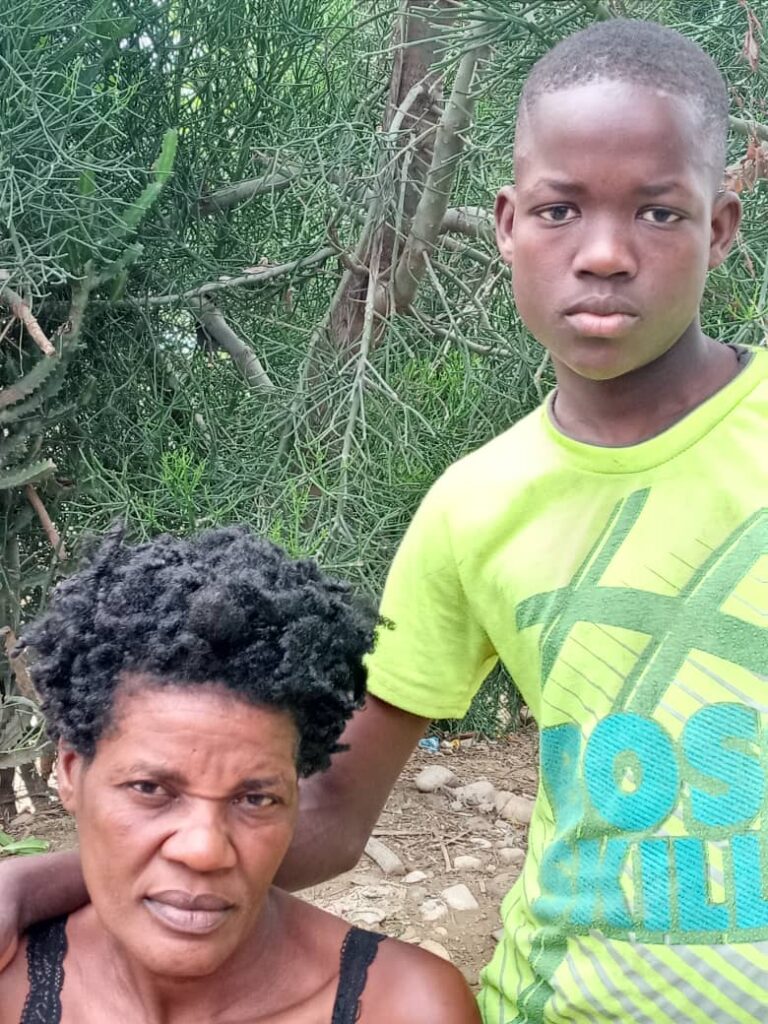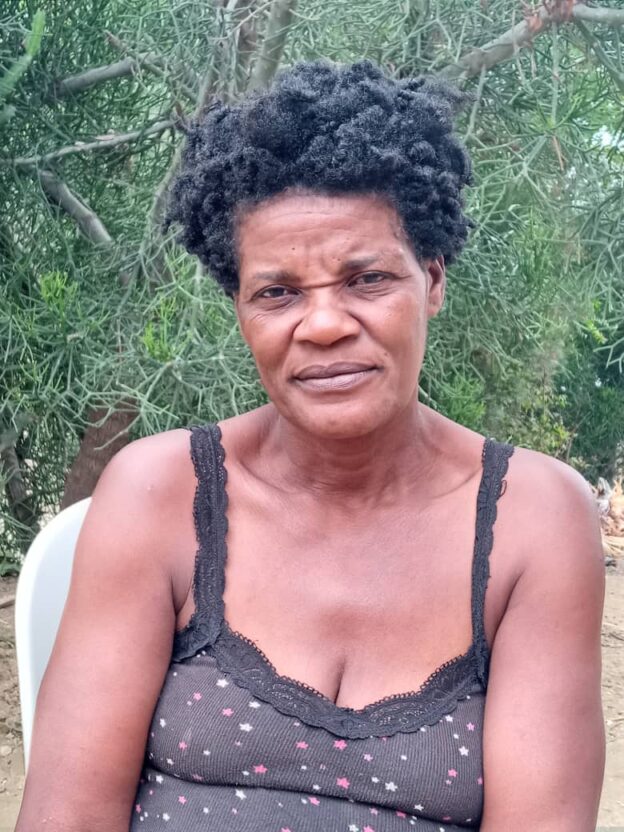Ismelie lives in Men Tomond, right along the rocky dirt road that reaches from National Route #3 near downtown Tomond to the large rural market in Kas. She shares her home with her partner and the younger four of their five children.
Before the family joined the CLM program, they lived in a small, thatched-roofed house. “I used to have to put my pots on the floor to collect water when it rained.” Her husband, Erinord, would farm while she managed a small commerce.
She and Erinord made home repair a priority, and they now live in a well-built, three-room house with a shiny tin roof. In their improved home one sees the real fruit of their efforts since they joined CLM. The new house is large enough that the couple had to buy almost as much roofing material as the program provided just to cover it, and that involved borrowing heavily. But Erinord found jobs in neighbors’ fields and in sugarcane mills, and he earned enough to pay off their debt.
Early in the morning on market days, Ismelie buys 1000 gourds of salt on credit and tries to sell it by the end of the day to pay her supplier. There are two big markets near her home, and she sells at both. She’s been doing it for years, ever since a friend convinced her to give it a try. “My friend was already selling salt. She came by one day when my husband was out, and she told me to come along with her. We could both sell.” The friend died, but Ismelie has stayed in the business. She can earn 300 gourds in each of the markets she works in every week. That’s about $3.75 in each market, or more than a dollar a day. It isn’t much, but it is more than many women have when they join the program. With no livestock or other assets, however, the family had nothing to fall back on.
She asked the program for two goats and a pig, and her livestock is doing well. Her two goats are now five. Each of the two she received had a first litter. While the pig is not yet ready even to be mated, it’s healthy and has been growing well. Pigs are a risky investment. They are vulnerable to disease. But Ismelie has been lucky so far. “My neighbors’ pigs mostly died, but mine is fine.”
She has a long-term plan for her livestock, too. She wants to be able to depend on it, especially on her goats, to send her children to school. Only one of the three school-age children who are living with her is in school this year, and she want to be able to send them all in September.
And she has hopes for her small business, too. She has continue to sell salt, just as she has for years, but has her eyes on other businesses: groceries or housewares or cleaning products. She’s not sure which. Right now, she doesn’t feel as though she can switch, however, because she depends on the wholesalers who sell her salt on credit. She doesn’t see any money of her own that she could invest.
This is where her story gets complicated. Because she has access to money, but she doesn’t seem very clear about the options available to her. She says that the kids are still too young to sell, which is fine, but she doesn’t show that she has considered selling a goat in a month or in two months to get herself started. She might feel as though it would be a bad idea, but she hasn’t even really even considered it as part of her plan.
And she is part of a savings and loan association that will end its cycle in May. The way these associations work, at the end of the year-long cycle, they pay out everything that members have saved throughout the year, along with any interest earned through the small loans members can take out. The interest can be as high as 15%, with payouts over 10% being common. She could plan to use her payout in May to start a business, but right now she’s thinking of buying another goat. That might be a good investment, but if she wants to get into a bigger business, as she says she does, she might want to consider this source.
She doesn’t have much money saved up, however, because she stopped attending the meetings and making her weekly contribution. She found that she couldn’t afford the 250 gourds she needed each week. “Everything I make through my business gets spent buying things for the kids.”
That’s understandable. Her commerce is small. But it appears to be based on a misunderstanding. She is not required to save 250 gourds each week. That’s how much she can save if she buys five shares when the association meets. But she is only required to buy one share, which costs just 50 gourds. She knows that she could afford that much, but she feels as though it isn’t worth her time if she cannot save the larger amount, even though at the end of the year it could dramatically affect what she could do.
She appears to lack vision. She doesn’t seem too clear about the options that are starting to open up for her. She has just three months left in the program, but she seems to need more coaching. We will need to work on that.

